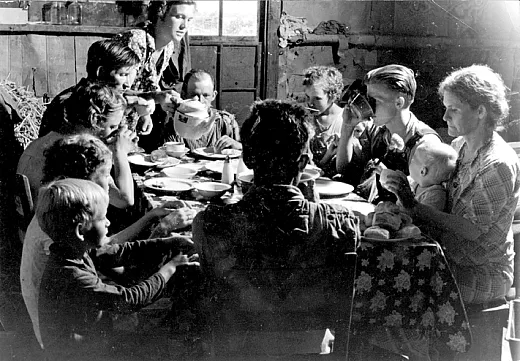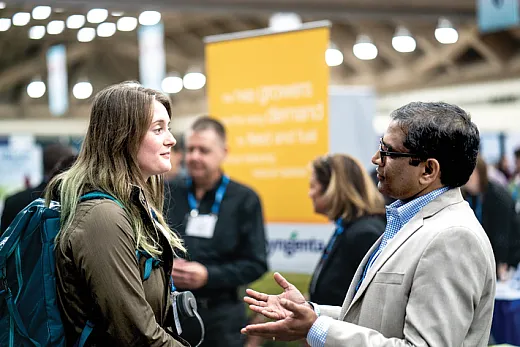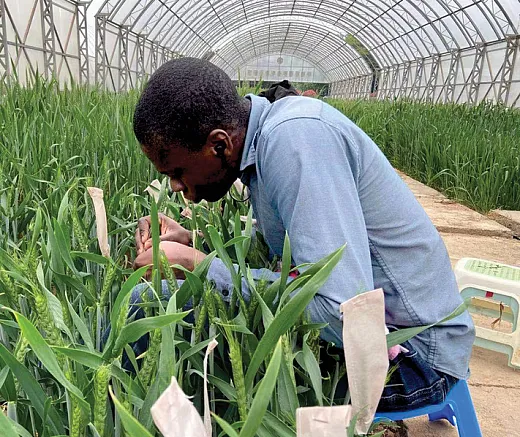The Loneliness and Social Isolation Epidemic
Can Our Scientific Society Be Part of Your Resilient Social Fabric?

You might have heard that one of the fastest‐growing epidemics is not obesity or heart disease, but loneliness and isolation, an epidemic that is no less devastating to our health. Epidemics have no easy solutions. Loneliness and isolation have highly diverse, tangled societal and personal origins but often feel attributed to an individual’s moral failings (as some claim for the fentanyl epidemic); failing to make friends, prioritize relationships in our busy lives, and maintain a community. This can hit a little too close to home for career professionals. Evidence shows the COVID epidemic did not cause the loneliness and isolation epidemic but further hastened growing trends with profound negative outcomes. The recent U.S. Surgeon General’s Advisory report (Office of the U.S. Surgeon General, 2023) on this topic contains startling statistics like “lacking social connection can increase the risk for premature death as much as smoking up to 15 cigarettes a day;” and that “ability to trust among other Americans has fallen from 45% (1972) to 30% (2016).”
We are not just individuals with fewer friends; we are losing both the social glue and the optimism that hold together modern society. To put this in perspective, and to develop solutions, we must reflect on how we got here. It is easy to point to cell phones and COVID, but as practical scientists, we need to make sure we don’t too quickly confuse effects and causes.

Among the most insightful and powerful pieces I read this year was written by David Brooks in 2020 called “The Nuclear Family Was a Mistake.” He describes how, throughout human history before WWII, large extended families lived and did everything together, having a commitment to support each other over all of life’s ups and downs. Today, the thought of living in the same house with our grandparents, aunts and uncles, cousins, or asking them for help, likely creates some sense of discomfort, unease, or inconvenience for many of us. We like our privacy. The rise in the smaller nuclear family (mom, dad, and a couple kids) can be tied to decreased needs for farm labor, increased education, and a number of other factors. Regardless, it has changed society and changed us.
To summarize Mr. Brooks, 100 years ago, the stories we would hear used to come from family members; by the 1960s, the nuclear family gathered around the TV to hear other people’s stories. Today, we each watch different stories individually on our own devices. The nuclear family remains idealized today but is a brittle support structure with fewer people getting married and divorce rates on the rise. Brooks writes, “We’ve made life freer for individuals and more unstable for families.” The breakdown of the nuclear family can be tied to economic issues (fewer “breadwinner” jobs), our bottomless appetites for more independence and privacy, many more women working, and other societal changes.
Popularized life stories we now hear are about the independence of self‐made billionaires, van life, problems with governments and institutions, and how not to get taken advantage of. In other words, stories that emphasize your successes (as measured by independence) are up to you, the only one you can rely on is yourself, and if you don’t succeed, it’s your failing. We know this is not true, but we like these stories—they are part of the mythology of America. Many of the undergraduates I teach have new goals built on these stories, but they seem to no longer lead to agrarian ideals of owning land as in the past, but to making money as much and as fast as possible, consuming more, and avoiding struggle. The future looks further disconnected.
Building Community No Longer a Priority

In the mid‐20th century, as the nuclear family was becoming prevalent, people replaced extended family support systems with churches, clubs and fraternities (Rotary, Masons, Elks, Lions, Shriners, etc.), schools, unions, and scientific societies. As you are likely aware, membership in many of these has since been on a long decline, despite increasing population and incomes.1ASA, CSSA, and SSSA have not fared much better. The yearly dues, the time commitments, the changing nature of work, and organizational formality all have been implicated. The transient nature of society, especially among professionals, is also often blamed.
The truth is we are often not prioritizing building community in the way people have in the past. We like our independence and privacy, and we can come and go most freely online. I hope and believe our scientific Societies serve as a community and support structure for some, and we would love to further strengthen our organizations for this role. Being global in reach, you can engage with your scientific Societies no matter where you live throughout your career. All of us need community; it just requires the spark of engagement.

Societal changes are accompanied by dramatically changing demographics. The last post‐WWII baby boom generation, born in 1964, is 59 years old (coincidently nearly the same as the average age of an American farmer, of 57.5; NASS, 2019), only six years away from a conventional retirement. The heroes we grew up with are retiring and passing on, and with them, passes a more communal culture. Many of us were sad to learn in August of the passing of Dr. Ron Phillips, a past CSSA president and eminent scientist whose accomplishments and scientific contributions are too numerous to mention. Over the last two decades, I appreciated meeting Dr. Phillips and his wife Judy. Until recently, it was common to see senior scientists, like Dr. Phillips, bring their spouses to scientific meetings and professional activities. The spouse would frequently attend social events, and during the scientific talks, would participate in activities with other spouses outside of the meeting. When those of us starting our careers saw this 20 years ago, it seemed strange to our generation to intermingle work and family in this way. Our spouses had different jobs and responsibilities. However, I now realize that was another hallmark of our disconnection from each other. Isolating family from our careers likely only increases loneliness and isolation; separating parts of our work and life from others supports our desires for independence but weakens both.
As Professionals, We Are Among the Most Vulnerable
I imagine the typical readership consists of professionals across our Societies. Professionals often make sacrifices for their careers. We move to different states away from our extended families, we have fewer children, and we work more hours, devoting fewer to social and leisure activities. We are therefore among some of the most vulnerable to suffer from the loneliness and isolation epidemic. In agriculture, we are also likely to be more isolated through distance to others. Yet at the same time, rural agricultural communities still seems to maintain some of the stronger institutions that can prevent these issues. If we drift further from these institutions as support structures, the epidemic will certainly affect us more acutely.
A generational sea change is coming, accompanied by even more cultural change. It is impossible to anticipate the future of institutions and work culture. Until now, societal trends have driven us into more isolation. Our increasingly intense focus on productivity and work in science further loosen our social fabric as does maintaining separations of work, family, and communities. As we near a season of holidays based around family, many scientists are reminded that they are states or continents away from those they love. The loneliness and social isolation epidemic is real, both as a perception and a reality.
I often meet with students and colleagues who privately share that they are in pain. The most important question now is what can we do about it? I wish I had some solutions; the fact I do not makes this month’s message even more important. The surgeon general’s report has some advice, but most of it can be summarized by “do better” or “try harder.” I suppose that is a start. The first step of any recovery program is to acknowledge there is a problem. The problem is indeed us, all of us, but as a direct result of the societal ideals, values, and constraints that have been passed down and that we now reinforce, including through our technologies.
We need meaningful relationships with each other more than our ego’s would like to admit. This is a good excuse to reach out to a new or old colleague you met at the Annual Meeting and strengthen your shared bonds. If nothing else, I hope this message causes you to first think, then research, and then discuss this epidemic with others. Our awareness will help us go out of our way to help ourselves and others through kindness in our everyday actions.
References
Office of the U.S. Surgeon General. (2023). Our epidemic of loneliness and isolation. The U.S. Surgeon General’s Advisory on the healing effects of social connection and community. https://www.hhs.gov/sites/default/files/surgeon‐general‐social‐connection‐advisory.pdf
NASS. (2019). 2017 Census of agriculture highlights: farm producers. USDA National Agricultural Statistics Service. https://www.nass.usda.gov/Publications/Highlights/2019/2017Census_Farm_Producers.pdf
Text © . The authors. CC BY-NC-ND 4.0. Except where otherwise noted, images are subject to copyright. Any reuse without express permission from the copyright owner is prohibited.










